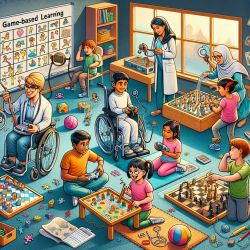Understanding Functional Connectivity in Developmental Coordination Disorder
Developmental Coordination Disorder (DCD) is a prevalent neurodevelopmental disorder that affects children's motor skills, impacting their daily activities and overall quality of life. Recent research by Rinat, Izadi-Najafabadi, and Zwicker highlights significant differences in brain connectivity in children with DCD compared to their typically-developing peers. This blog explores how these findings can enhance practitioner skills and encourage further research.
Key Findings from the Research
The study utilized resting-state MRI to compare the whole-brain functional connectivity of children with DCD to typically-developing children. The findings revealed altered connectivity in the sensorimotor network, particularly between the posterior cingulate cortex (PCC), precuneus, and the posterior middle temporal gyrus (pMTG). These areas are crucial for motor learning and action-related information processing.
Implications for Practitioners
Understanding these neurological differences is vital for practitioners working with children with DCD. Here are some ways practitioners can apply these findings:
- Tailored Interventions: By recognizing the specific brain areas involved, therapists can develop targeted interventions that focus on improving connectivity and coordination in these regions.
- Enhanced Assessment Techniques: Incorporating neuroimaging insights into assessment protocols can provide a more comprehensive understanding of each child's unique challenges.
- Holistic Approach: Given the involvement of the PCC in various cognitive functions, practitioners should consider a holistic approach that addresses both motor and cognitive aspects of DCD.
Encouraging Further Research
The study by Rinat and colleagues is a stepping stone for further exploration into the neural underpinnings of DCD. Practitioners and researchers are encouraged to:
- Investigate Co-occurring Conditions: Since many children with DCD also have ADHD, understanding the overlap in brain connectivity can lead to better dual-diagnosis interventions.
- Explore Longitudinal Studies: Long-term studies could provide insights into how brain connectivity changes with intervention and development over time.
- Collaborate Across Disciplines: Interdisciplinary research can integrate findings from neuroimaging, psychology, and education to create more effective therapeutic strategies.
Conclusion
The research on functional connectivity in children with DCD provides valuable insights that can enhance therapeutic practices and encourage further investigation into this complex disorder. By applying these findings, practitioners can improve the quality of life for children with DCD and support their developmental journey.
To read the original research paper, please follow this link: Children with developmental coordination disorder show altered functional connectivity compared to peers.










